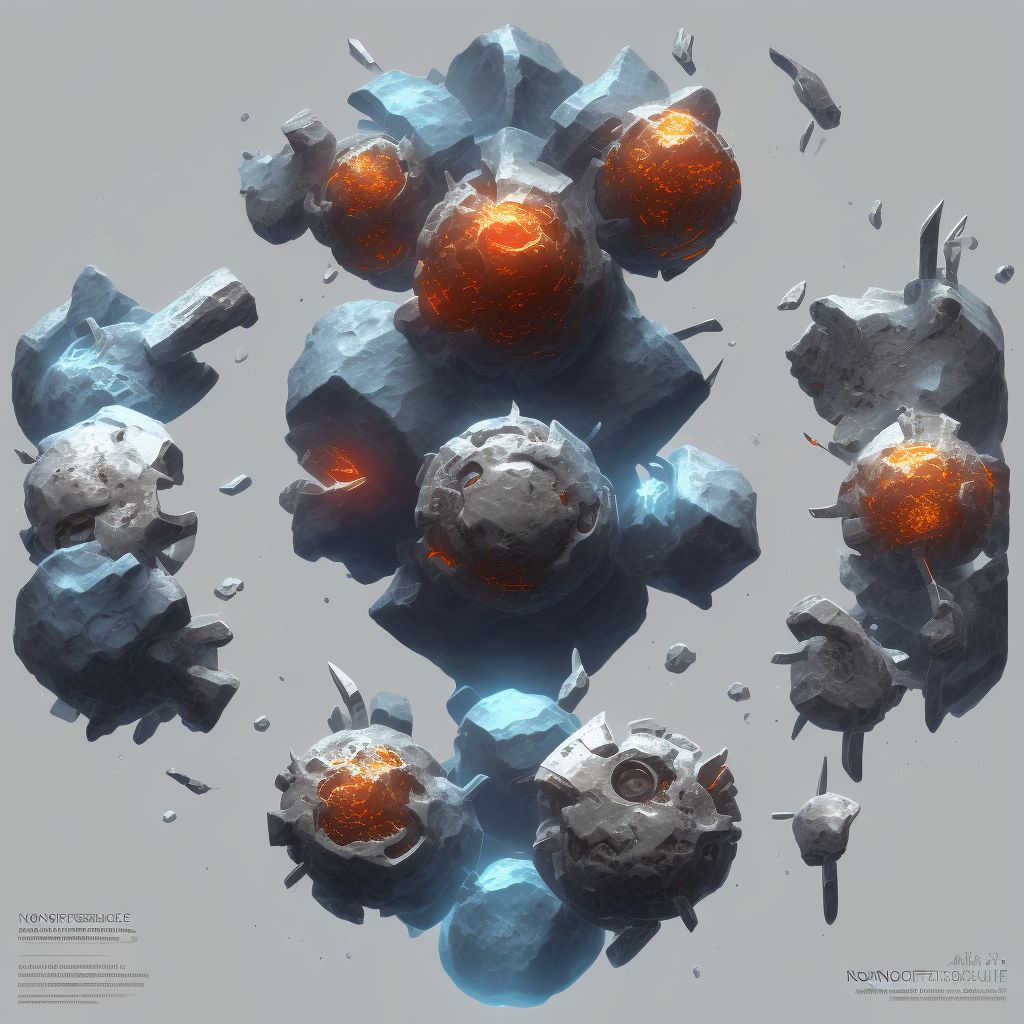
Nondisplaced oblique fracture of shaft of right fibula, initial encounter for closed fracture Save
ICD-10 code: S82.434A
Disease category: S82.434: Nondisplaced oblique fracture of shaft of right fibula
Nondisplaced Oblique Fracture of Shaft of Right Fibula: Understanding the Initial Encounter for Closed Fracture
A nondisplaced oblique fracture of the shaft of the right fibula refers to a specific type of bone injury that occurs when the fibula, one of the lower leg bones, breaks but the broken ends remain aligned. This condition is commonly encountered in medical settings, and it requires immediate attention to prevent further complications.
During the initial encounter for a closed fracture, healthcare professionals focus on assessing the extent of the injury and developing an appropriate treatment plan. However, this article aims to provide an overview of the condition without discussing treatment options.
1. Symptoms: Patients with a nondisplaced oblique fracture of the shaft of the right fibula may experience localized pain, swelling, and bruising around the affected area. Difficulty in bearing weight or walking can also be observed.
2. Diagnosis: To confirm the presence of a nondisplaced oblique fracture, healthcare providers use various diagnostic techniques. X-ray imaging is commonly employed to visualize the fracture and assess its severity. Other imaging modalities like CT scans or MRI may be recommended in certain cases.
3. Complications: While a nondisplaced oblique fracture may appear straightforward, if left untreated, it can lead to complications. These may include delayed healing, malunion (improper bone alignment during healing), nonunion (lack of bone healing), or chronic pain.
4. Treatment Options: It is important to note that treatment options are not discussed in this article. However, healthcare professionals may recommend various approaches, such as immobilization with a cast or brace, pain management, physical therapy, or in some cases, surgical intervention.
5. Recovery: The recovery period for a nondisplaced oblique fracture of the shaft of the right fibula varies depending on several factors, including the patient's age, overall health, and the severity of the fracture. Following the prescribed treatment plan and adhering to any recommended rehabilitation exercises can significantly aid the healing process.
- Nondisplaced oblique fractures
- Initial encounter for closed fracture
- Right fibula shaft fracture
- Common symptoms
- Diagnostic techniques
- Potential complications
- Treatment options
- Recovery period
In conclusion, a nondisplaced oblique fracture of the shaft of the right fibula is a specific type of bone injury that requires immediate attention. This article aimed to provide a brief overview of the
Treatment of Nondisplaced oblique fracture of shaft of right fibula, initial encounter for closed fracture:
Treatment Options for Nondisplaced Oblique Fracture of Shaft of Right Fibula: Initial Encounter for Closed Fracture
A nondisplaced oblique fracture of the shaft of the right fibula can be a painful injury that requires immediate medical attention. This type of fracture occurs when the bone breaks at an angle, but the broken ends remain aligned and in their correct position. The ini...
To see full information about treatment please Sign up or Log in